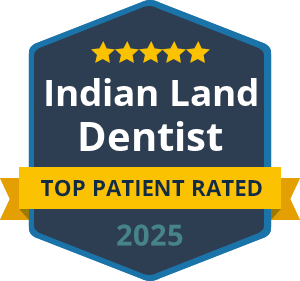Your Child’s Smile Timeline: A Parent’s Guide to Dental Development

Navigating your child’s dental health journey can feel overwhelming, especially when conflicting advice comes from every direction. From that first tiny tooth to the teenage years of orthodontics, each stage of your child’s oral development presents unique opportunities and challenges. Understanding what to expect – and when to expect it – empowers parents to make informed decisions that set their children up for a lifetime of healthy smiles. This comprehensive timeline breaks down the crucial milestones and provides practical guidance for each phase of your child’s dental development.
The Foundation Years: Birth to Age 2
Your child’s oral health journey begins long before their first tooth appears. During pregnancy, your own dental health directly impacts your baby’s development, making prenatal dental care crucial for both mother and child.
- 0-6 Months: Pre-Tooth Care: Even before teeth erupt, establishing good oral hygiene habits sets the stage for future success. Clean your baby’s gums daily with a soft, damp cloth to remove bacteria and begin familiarizing them with the sensation of oral care.
- 6-12 Months: First Teeth Emerge: Most babies get their first tooth between 6-12 months, typically starting with the bottom front teeth. This milestone marks the beginning of active dental care and the need for your first dental visit.
- 12-24 Months: Building the Foundation: By age two, most children have several teeth and should be visiting the dentist regularly. This period is crucial for establishing positive dental experiences and catching any early developmental issues.
During these formative years, avoid putting babies to bed with bottles containing anything other than water, as this can lead to severe tooth decay known as “baby bottle tooth decay.”
The Discovery Phase: Ages 2-5
The toddler and preschool years present unique challenges as children develop independence while still requiring significant guidance and supervision with oral hygiene.
- Establishing Independence: Around age 2-3, children often want to brush their own teeth. Encourage this independence while ensuring they understand that parents still need to help. A good rule of thumb is that children need assistance until they can tie their own shoes – usually around age 6-7.
- Fluoride Introduction: This is typically when children can begin using fluoride toothpaste, but only a rice-grain-sized amount for ages 2-3, increasing to a pea-sized amount for ages 4-5. Always supervise brushing to prevent swallowing.
- Dietary Habits Formation: The eating patterns established during these years often persist into adulthood. Focus on limiting sugary snacks and drinks between meals, and establish regular meal times that promote healthy saliva production.
- Early Intervention Opportunities: Preschool years are ideal for identifying and addressing habits like thumb sucking or prolonged pacifier use that could affect dental development.
Many parents are surprised to learn that cavities in baby teeth can affect the development of permanent teeth underneath, making preventive care during this stage absolutely critical.
The Transition Period: Ages 6-8
The early elementary years mark a significant transition as children begin losing baby teeth and developing more sophisticated oral hygiene skills.
- First Permanent Molars: Around age 6, the first permanent molars typically erupt behind the baby teeth. These “six-year molars” are particularly susceptible to decay because parents often don’t realize they need special attention – they’re not replacing baby teeth but are brand new permanent teeth.
- Losing Baby Teeth: The natural loss of baby teeth usually begins around age 6-7, starting with the bottom front teeth. This process continues until around age 12-13. Some children lose teeth earlier or later, which is usually normal but worth discussing with your dentist.
- Developing Motor Skills: Children at this age are developing the fine motor skills necessary for effective brushing and flossing. Most can brush independently with supervision, but still need help with flossing.
- Sealant Considerations: The permanent molars that erupt during this period are excellent candidates for dental sealants – thin protective coatings that significantly reduce the risk of cavities in the deep grooves of back teeth.
This transition period requires careful monitoring as children navigate the responsibility of caring for both baby teeth and new permanent teeth simultaneously.
The Growth Spurt Years: Ages 9-12
The pre-teen years bring rapid dental development and often the first conversations about orthodontic treatment.
- Peak Cavity Risk: Surprisingly, children ages 9-12 often experience their highest cavity risk due to a combination of factors: increased independence in food choices, less parental supervision of oral hygiene, and the eruption of permanent teeth with deeper grooves.
- Orthodontic Evaluation: The American Association of Orthodontists recommends that children have their first orthodontic evaluation by age 7, but ages 9-12 are when many orthodontic issues become apparent and treatment often begins.
- Sports and Safety: As children become more involved in organized sports, this is the ideal time to discuss protective mouthguards and establish good habits for preventing dental injuries.
- Peer Influence: Social awareness increases dramatically during these years, making it important to address any aesthetic concerns before they impact self-confidence.
Many parents find that involving children in choosing their own toothbrush colors or flavors helps maintain enthusiasm for oral hygiene during this independence-seeking stage.
The Challenge Years: Ages 13-18
The teenage years present unique dental health challenges as physical changes, social pressures, and increasing independence converge.
- Wisdom Teeth Considerations: Third molars (wisdom teeth) typically begin developing during the early teen years, though they may not erupt until the late teens or early twenties. Regular monitoring helps determine if removal will be necessary.
- Orthodontic Treatment Peak: Many teenagers undergo orthodontic treatment during these years. Modern options like clear aligners have made treatment more socially acceptable, but compliance with oral hygiene becomes even more critical.
- Risk Behavior Management: Teenagers may experiment with behaviors that threaten oral health, including tobacco use, oral piercings, or using teeth as tools. Open communication about these risks is essential.
- Dietary Independence: As teens gain more control over their food choices, they may gravitate toward convenience foods that are often high in sugar and acid. Education about the impact of diet on oral health becomes crucial.
- Body Image and Confidence: Dental aesthetics often play a significant role in teenage self-confidence. Addressing concerns promptly can prevent long-term psychological impacts.
The key during teenage years is maintaining open communication while gradually transferring full responsibility for oral health to the young adult.
Special Considerations for Modern Families
Today’s families face unique challenges that previous generations didn’t encounter, requiring adapted approaches to dental health management.
- Technology Integration: Modern children are digital natives, and many dental practices now offer apps and online tools to help track brushing habits and educate about oral health in engaging ways.
- Busy Family Schedules: With packed schedules of school, activities, and work, maintaining regular dental appointments and consistent oral hygiene routines requires intentional planning and family commitment.
- Dietary Challenges: The prevalence of processed foods, sports drinks, and frequent snacking presents new challenges for maintaining oral health that require updated strategies and education.
- Early Intervention Benefits: Modern dental techniques allow for earlier intervention in many cases, potentially preventing more extensive treatment later. However, this requires parents to be proactive about regular dental visits.
Red Flags: When to Seek Immediate Attention
Certain symptoms warrant prompt dental evaluation, regardless of your child’s age or when their last appointment was scheduled.
- Persistent Pain: Any tooth pain lasting more than a day requires professional evaluation
- Facial Swelling: Swelling around the face, jaw, or gums can indicate serious infection
- Trauma: Any injury to teeth or mouth should be evaluated promptly, even if damage isn’t immediately visible
- Unusual Breath Odor: Persistent bad breath despite good hygiene may indicate underlying issues
- Changes in Eating Habits: Avoiding certain foods or favoring one side of the mouth may signal dental problems
Early intervention almost always results in simpler, less expensive treatment and better outcomes for your child.
Building Lifelong Healthy Habits
The ultimate goal of pediatric dental care isn’t just preventing cavities – it’s establishing patterns and attitudes that will serve your child throughout their lifetime.
- Positive Associations: Creating positive experiences with dental care from an early age helps prevent dental anxiety that can persist into adulthood and interfere with proper care.
- Education and Understanding: Children who understand why oral health matters are more likely to maintain good habits independently as they mature.
- Family Modeling: Parents who prioritize their own dental health and model good oral hygiene habits raise children who view dental care as a normal, important part of life.
- Routine Establishment: Consistent daily routines around brushing and flossing, combined with regular professional care, create habits that become automatic over time.
Partnering with Your Dental Team
Successful pediatric dental care requires a partnership between parents, children, and dental professionals. Choose a practice that welcomes questions, explains procedures in age-appropriate ways, and takes time to educate both parents and children.
Regular communication with your dental team about your child’s development, habits, and any concerns ensures that care remains proactive rather than reactive. The best outcomes occur when families and dental professionals work together toward shared goals.
Your child’s smile timeline doesn’t end at 18 – the foundation you build during their childhood and teenage years influences their oral health for decades to come.
Start Your Child’s Healthy Smile Journey Today
Every child’s dental development is unique, but having the right guidance and care makes all the difference. At Carolina Commons Dentistry, we understand the importance of each stage in your child’s smile timeline and provide comprehensive, family-friendly care that grows with your child’s needs. Our experienced team is committed to making dental visits positive experiences while ensuring your child develops the healthy habits that will last a lifetime. Contact Carolina Commons Dentistry today to schedule your child’s next appointment and give them the foundation for a lifetime of healthy, confident smiles.

